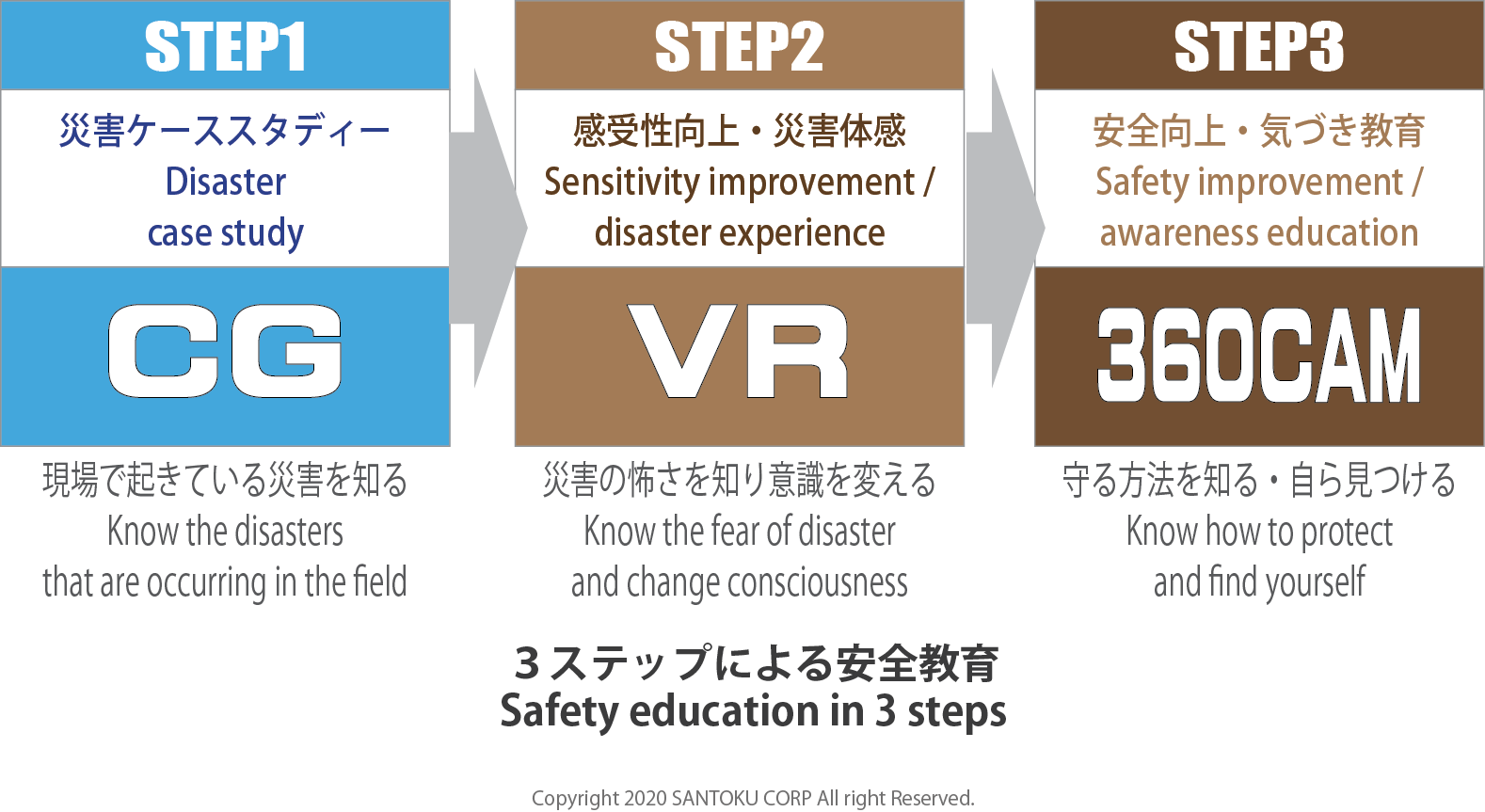RiMM recommends a 3-step safety education. Clarify goals for each step. Focus on a single purpose and keep it simple. Clarify the meaning of each educational step. Continue to accumulate consciousness in 3 steps. Systematic education with variations in content is required.

Step 1 “Notify what is happening in the field!”
We will pick up disasters that have occurred or may occur at your site, and case study the occurrence status, results, and response methods of disasters. Education will be provided using actual disaster cases and CG images that reproduce the disaster.
Step 2 “Change your consciousness due to a disaster you feel close to you!”
Select the disasters that are likely to occur at your site. Lets you experience a disaster using the RiMM. You can subjectively experience a disaster and convey the fear of a disaster through a simulated experience. After all, disasters are scary, I don’t want to be in such a state, and I don’t like it. This encourages you to take step 3 safety education seriously.
Step 3 “Acquire safety knowledge! Further improve predictive ability!”
We will carry out safety education that suits your site. We will explain safe behavior, use of safety equipment, rules to protect safety, etc. and encourage implementation. In order to further raise awareness, we will use a VR camera that can shoot 360 degrees to record the actual site as a video and reproduce it in virtual space. We will provide education to let the target person enter the site and point out the place where the disaster occurred = make them aware.
In this way, it is important to efficiently implement education in three stages according to the actual workplace. The safety will never improve just by experiencing the virtual disaster in step 2. Education in steps 1 and 3 before and after experiencing a virtual disaster is the most important to improve safety. In addition, for disaster cases used in education, it is necessary to select disasters that are thought to occur in the immediate vicinity.